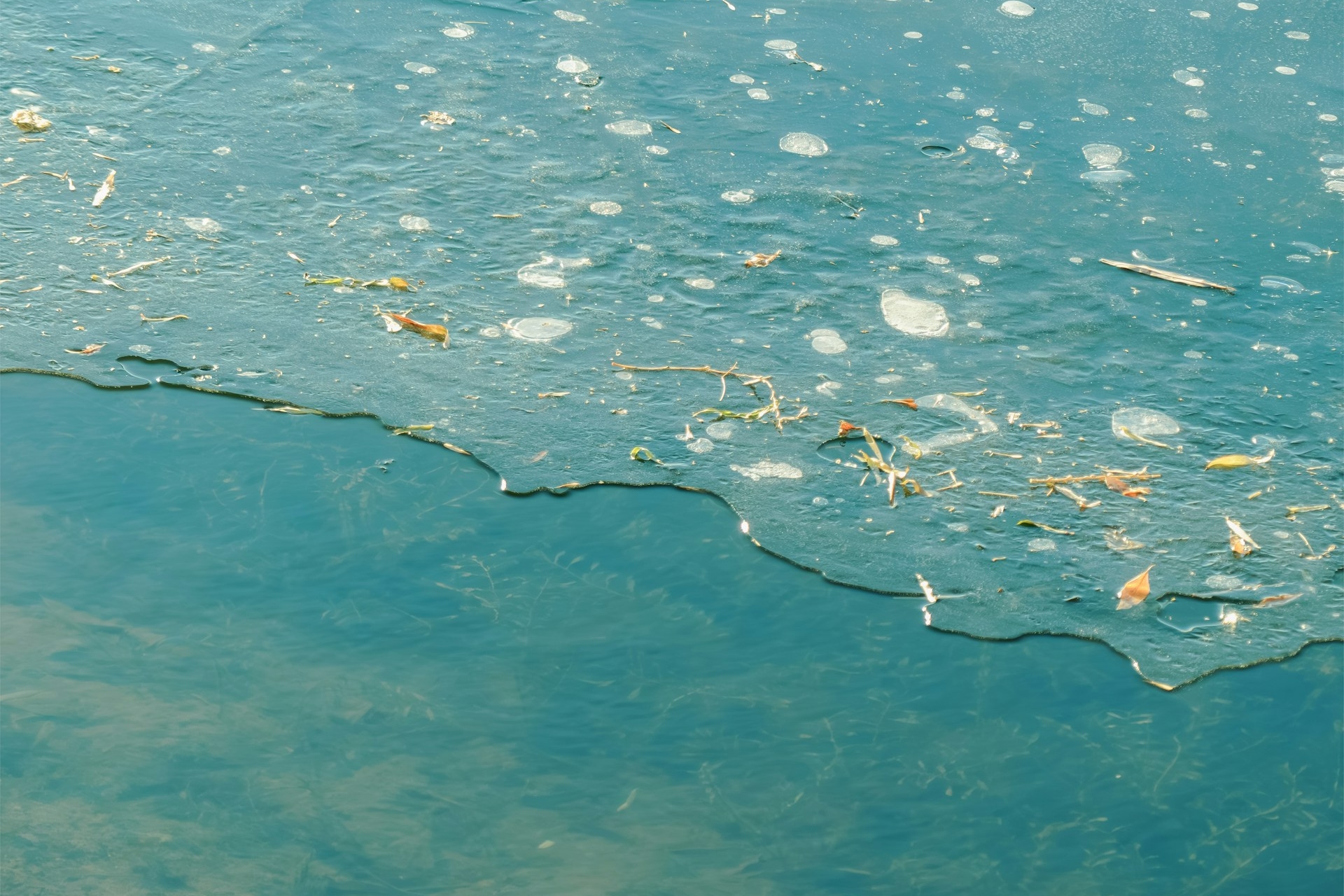
How Does Overpopulation Affect the Environment?
November 25, 2024 - Emily Newton
Revolutionized is reader-supported. When you buy through links on our site, we may earn an affiliate commission. Learn more here.
Right now, there are upwards of 7.5 billion people living on planet Earth. They’re of all different creeds and colors, races and religions, but they all have one thing in common — the planet they call home. Unfortunately, we’re getting close to the planet’s maximum sustainable population, which experts estimate at 9 to 10 billion individuals. What are the effects of overpopulation on the environment?
What Causes Overpopulation?
Overpopulation doesn’t just happen in humans, but we tend to take steps to prevent the natural events that cause large population deaths. The most common causes for overpopulation usually include:
- An increased birth rate and lower birth mortality rates.
- Decreased overall mortality rates and increased life spans.
- Introduction of foreign species — does not generally apply to humans
In the last 100 years, we’ve improved medical science dramatically. Science has the increased birth rate, lowered the overall mortality rate and improved life expectancy. However, how has this affected the planet thus far, and how will it continue to affect it into the future?
Why Is Human Overpopulation a Problem?
Simple economics tells us that an imbalance between demand and supply can lead to significant, often long-lasting issues. Here are eight effects of overpopulation, underscoring the need for immediate action.
1. No Clean Water
We may live on a water planet, but 97.5% of that water is ocean and other undrinkable salt-filled sources. Only 2.5% of water is fresh water. Of that fraction, 1% is either polluted for consumption or entirely unreachable. Much of it remains frozen in the form of polar ice caps. All told, less than 1% of the planet’s freshwater resources are available for consumption.
Research has shown that, as a species, we’re consuming fresh water faster than the planet can replenish it.
2. Lower Life Expectancy
Thanks to medical intervention, people can live to be up to 100 years old — as long as they live in developed countries where they have access to that medical care. One study done by UN researchers, found that the majority of population increases over the next 25 years or so will be in less developed nations. The projections estimate just nine countries will be responsible for nearly half of the world’s population growth by 2050.
Dramatic population increases in these less developed areas will lead to a higher mortality rate and a lower life expectancy because of problems with infrastructure, food, water and housing.
3. Plant and Animal Extinction
Greater numbers of human beings populating the planet means that there are fewer resources available — food, water and habitat, specifically — for other species to thrive. Global warming is already threatening to cause mass extinctions between now and 2050. Scientists predict that in that time, more than half of the plant and animal species on the planet will face possible extinction.
Much of this is due to habitat loss, climate change and the pollution generated by billions of human beings. Many species are also at risk because of overfishing, poaching and our tendency to exploit our natural resources.
The extinction of some species doesn’t just impact us — it impacts the ecosystems where these plants and animals live. Without a careful balance of life forms in an ecosystem, from the smallest single-celled life form to the largest apex predator, ecosystems can collapse, causing the extinction of even surviving species.
4. Soil Depletion From Excessive Farming
Soil nutrition is a delicate balance. Planting large numbers of crops can deplete the soil’s natural resources, making it difficult or even impossible to continue to farm in that area. As human populations continue to grow, we will require increasing amounts of food, which requires more and more farmlands that could potentially be depleted.
This also leads to deforestation — much of the drastic deforestation of the rainforest has been completed to create new farmlands for growing populations in the area.
Additionally, this intensive farming creates runoff carrying pesticides and other waste into natural water sources.
5.Climate Change
We’ve been seeing the results of climate change firsthand in the dramatic weather patterns of 2017 — multiple category five hurricanes, dramatic wildfires and floods, and other atypical weather patterns threatening both lives and property.
The majority of this is due to human-generated greenhouse gasses that are causing the planet to warm much faster than it would otherwise. The larger the human population is, the more greenhouse gasses we will create. This makes it even more difficult or even impossible to reverse.
6. Air Quality Deterioration
As populations grow, so does the demand for energy, transportation and industrial production — leading to significant air quality decline. Urban areas have quickly become hot spots for increased pollution due to the concentration of vehicles and factories.
The World Health Organization recently warned that ambient air contamination is responsible for approximately 4.2 million premature deaths yearly. Densely populated cities face the highest risks. For example, cities like Beijing and New Delhi have experienced severe air quality issues, posing serious health risks to residents.
7. Increased Waste Generation
One of the most compelling effects of overpopulation is the exponential increase in global waste generation. With more people comes more consumption of goods, food and resources, resulting in mountains of waste that cities struggle to manage effectively. In the U.S. alone, the average person already generates 4.6 pounds of waste daily — imagine how much more if the population increases further.
Several cities have taken innovative steps to combat waste through recycling and composting programs, but the rate of generation doesn’t appear to be slowing down. UN projections estimate around 3.8 billion tons of municipal solid waste produced by 2050.
In developing countries, inadequate waste management infrastructure leads to rampant littering and pollution, with plastic waste often ending up in oceans and waterways. This issue is multifaceted as it poses environmental hazards and threatens public health.
8. Higher Homelessness Rates
The issue of homelessness is intricately linked to overpopulation and the accompanying strain on housing resources. As urban populations swell, the demand for affordable housing skyrockets, often outpacing supply. Many cities struggle to provide adequate housing for their residents, leading to rising rental prices and increased homelessness.
For instance, cities like Los Angeles and San Francisco have seen a dramatic rise in homelessness, driven by soaring housing costs and insufficient affordable options. In these urban areas, many individuals and families find themselves unable to secure stable accommodations, leading to a visible crisis on the streets.
The situation is compounded by economic inequality and lack of access to mental health services, which are exacerbated by the pressures of overpopulation.
4 Solutions to Reverse the Effects of Overpopulation
What can we do, as a species, to prevent or reverse the effects of overpopulation? If we continue on this path, we will have more than 10 billion souls on this planet by 2060, just 41 years from now. What can we do to prevent this?
We’ve already seen that policies that attempt to regulate the number of children each couple can have don’t work. In China, which limited its citizens to one child per family for the better part of 36 years, there have only been 100 million children born. The Chinese government got rid of the one-child policy in 2016. Nonetheless, parents in the country are still reluctant to have more children because of the expense. The country’s population will peak at 1.45 billion, likely by 2027, and then spend the next several decades falling. By 2050, one-third of Chinese residents will be over 65.
If government legislation doesn’t work, what can we do to reduce our population? How can we prevent it from exploding to an unsustainable number?
1. Safe, Effective and Available Contraceptive
The U.S. is currently facing a war on women’s rights. States are banning abortion and birth control and threatening women with jail time if they exercise their rights to make decisions about their own bodies. One of the most effective things we can do is to provide universal access to safe, effective and affordable contraceptives for both genders. Female contraceptives have been on the market for decades, and early in 2019, a male birth control pill passed FDA safety tests and may soon be available on the open market.
Over time, family planning can lower the population. Reducing global average fertility to 2.0 children per woman, rather than the current level of 2.37, could reduce our global community by 777 million people by 2050.
2. Comprehensive Sex Education
Too many places still teach abstinence-only, which has been proven to be both ineffective and unethical, rather than offering comprehensive sex education. Instead of teaching teenagers how to protect themselves and practice safe sex, they’re instead told to avoid sex at all costs until marriage. Anyone who’s ever dealt with a teen of either gender knows that the quickest way to get them to do something is to tell them not to.
This type of sex education is especially ineffective considering that younger generations are waiting longer to get married — or aren’t getting married at all. The average age for beginning sexual activity hasn’t changed much since the 1990s.
Contrary to popular belief, comprehensive sex education isn’t encouraging teenagers to have sex. It’s teaching them how to keep themselves safe if and when they choose to do so.
3. Government Subsidies for Responsible Parenting
We need to continue having children to make sure our population remains stable. The problem lies in the fact that people are having more children than necessary. Ideally, we should want to limit our families to two children per woman. Government incentives or subsidies could encourage families to do just that. If the family doesn’t have more than two children, for example, they could qualify for this benefit.
This would be a contentious move to make, especially if you consider the families that can’t or don’t want to have children. However, it could be a tool to ensure our population doesn’t continue to explode, reaching unsustainable levels in the coming decades.
4. Technological Innovations
Technology advancements present highly practical solutions to overpopulation, mitigating the effects on resource management and the environment. For instance, developers can utilize 3D printing innovations to construct sustainable housing quickly for up to 30% cheaper than conventional methods. Integrating smart home technologies that monitor and optimize energy and water use can also contribute to sustainable living practices.
Electric and autonomous vehicles are another promising avenue for addressing the effects of overpopulation. EV infrastructure improves transportation efficiency in densely populated areas and reduces harmful emissions. Introducing these solutions can help reduce congestion and pollution in urban areas.
Right now, if we destroy our planet, we will have nowhere else to go. If the human population continues to grow unchecked, the effects of overpopulation on the environment will leave us with a planet no longer be able to sustain us.
This article originally published on 1/16/18 and was updated on 11/25/24 to include solutions to reversing the effects of overpopulation.
Revolutionized is reader-supported. When you buy through links on our site, we may earn an affiliate commission. Learn more here.
Author
Emily Newton
Emily Newton is a technology and industrial journalist and the Editor in Chief of Revolutionized. She manages the sites publishing schedule, SEO optimization and content strategy. Emily enjoys writing and researching articles about how technology is changing every industry. When she isn't working, Emily enjoys playing video games or curling up with a good book.







